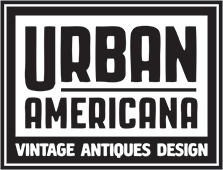Vintage Furniture Guide for the New Year January 11 2019
The new year often inspires a fresh start where resolutions and life changes abound. Décor is a wonderful place to institute some transformations. As you head into the next chapter of your life, consider how vintage furniture and interior design can add a touch of personality to your style, while creating a charm that stands the test of time.
What Defines Vintage?
The term vintage was not always used to describe fashion or design style. In fact, its origin relates directly to wine. When the word was paired with a particular year, it referred to the time when the grapes were harvested. The definition has been extended to include many other things but is most commonly associated with clothing, along with furniture and interior décor. Like wine, the term often relates to the year when the piece was originally manufactured.
Whether or not something actually has to be made in the decade it hearkens back to is up for debate, but the main idea behind the concept is the nostalgia for a time in the past. Lovers of these pieces usually have a unique sense of style with an appreciation for what was once considered current.
What Qualities Make a Furniture Piece Fit the Style?
The distinction that makes something vintage has become more and more specialized over the years. Now, it takes more than being made in a particular time period to earn the title. For something to truly embody the word, it should grandly reflect the decade it comes from.
Each style era is defined by key patterns and characteristics. Interior design has gone through many transformations over the last century, embracing several well-defined approaches:
- Mid-century modern
- Boho
- Rustic
- Shabby chic
- Old Hollywood
- Art deco
As the name suggests, mid-century modern décor was big around the middle point of the 20th century; it emphasized simplistic design that featured clean lines and easy shapes. Because this was a style that permeated throughout the 50s and 60s, furniture that is considered vintage should reflect these attributes. The most iconic pieces are more than just a date of manufacture. They should represent the most recognizable style of an era.
The style also doesn’t have to reflect decades within the last hundred years. Pieces from older centuries can hold a lot of interest and be quite valuable.
What Trends Are in Right Now?
The rustic design style has dominated in recent years and should continue to have an impact going into the new year. It’s looking like brass will be back, making antique finishes even more desirable. Look for velvet making another splash on fabric choices, and as usual, mid-century modern remains a classic worth incorporating. Retro lighting is another thing to keep an eye on.
Despite these anticipated trends in 2019, it’s good to remember that the beauty of vintage is that it can come from whatever earlier style inspires you most. Whether you swoon for old industrial pieces or early 20th-century wooden antiques, this furniture will stand out in your home because it evokes a unique taste of old age charm.
What Should You Keep in Mind When Buying Vintage?
Putting together a vintage-style room can be a lot of fun. You don’t need to choose a designated era to base all of your furniture pieces on. Instead, try mixing and matching different time periods for an eclectic vibe. Embracing this philosophy may reward you with a space that’s truly one-of-a-kind.
Don’t be afraid of how old something may look when you’re shopping. Once you’ve put the piece in the context of your new space, its age will become its greatest asset. High-quality furniture can be implemented as-is, or you can take something that’s rough around the edges and restore it to its former glory. Fixing up classic pieces gives you a great deal of flexibility.
Another great aspect of shopping for older furniture is the enlightening background you get to experience and share. Sometimes pieces will have unique backstories with specific details, but even those that do not have the potential for discovery.
Design often adapts to the challenges of how people live, meaning certain characteristics can reveal a lot about a particular time period. When you consider context, you can reveal stories you didn’t even know were there and share those stories will all who admire your décor.
Even if you’re unsure of the specific style you want to express, jump right in! Shopping without a specific plan can be an inspiring experience that points you in the direction you eventually decide to go.
Start uncovering your room’s design potential today by visiting Urban Americana, Or Contact Us Online.
